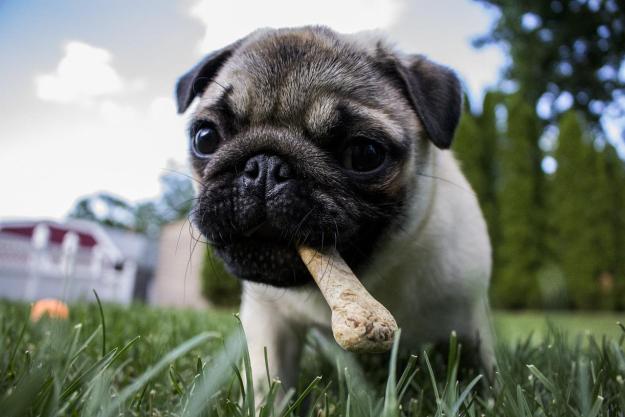Some human foods, such as carrot sticks, berries, and a small piece of cheese, are all perfectly safe for dogs in moderation. Other foods, however, should never be shared with your pup. Foods containing garlic, onions, or chocolate are firmly on the list of forbidden fur baby snacks. As a pet parent, it’s your job to keep your animals safe and healthy, which means keeping them out of the cabinets.
There are a few things you can do to achieve this, but every dog manages to steal a piece of chocolate or two at some point — whether off the counter or on the street. This is especially true around chocolate-themed holidays, like Valentine's Day or Christmas. Here's a rundown of how to help, when to call the vet, and (perhaps most importantly) what not to do when your dog eats chocolate.
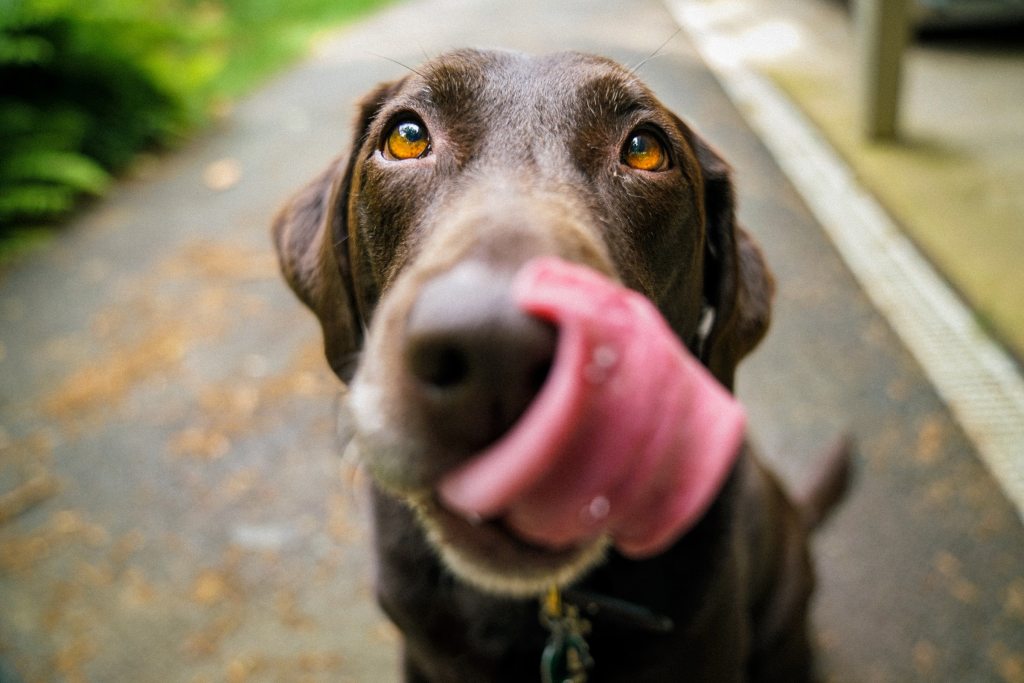
Is chocolate toxic to dogs and how much will it take to harm him?
Yup, but there are actually two reasons why. According to Pet Life Today‘s Dr. Jennifer Coates, a veterinarian, “The toxic components in chocolate are stimulants called methylxanthines, specifically theobromine and caffeine.” Theobromine, the chemical component in chocolate that causes the bulk of its toxicity in dogs, may result in clinical symptoms such as the following:
- Increased thirst
- Increased urination
- Panting
- Restlessness
- Diarrhea
- Vomiting
- Muscle tremors
- Seizures
- Increased heart rate
- Heart failure
While chocolate is never safe for a dog, the fatal amount largely depends on your dog’s size, weight, and additional health factors. Puppies, senior dogs, small breeds, and dogs with preexisting medical conditions have a greater chance of dying after eating chocolate. On average, a fatal dose of theobromine ranges from 100 to 500 milligrams per kilogram (or 2.2 pounds) of body weight. Dark chocolate contains a much more concentrated amount of theobromine than milk or white chocolate, making it much more lethal to your pooch.
You can use this free calculator from PetMD to determine chocolate’s toxicity levels on your pooch.
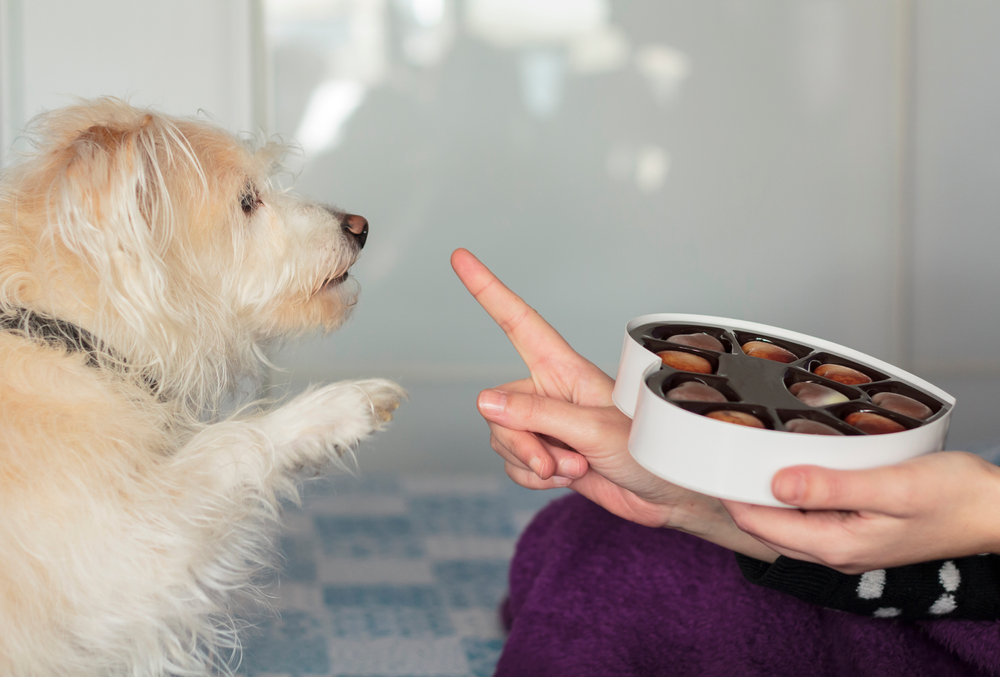
Here's how to keep dogs safe from chocolate
Step 1: Keep human treats sealed and away.
Find a dog-free area and declare it a chocolate zone. The best places are ones that Fido can never get to like inside the fridge or in a high cabinet.
Step 2: Buy dog-safe "chocolate."
Consider substituting carob, which is a dog-friendly ingredient. You can even feed it to them as a treat in small quantities!
Step 3: Clean up and store leftovers carefully.
Having a designated chocolate spot works well, but after picking out a few choice truffles for dessert, you'll have to pack up the box. Don't leave a half-eaten bar out where your agile pup might take it. Use sturdy containers for leftovers, like Tupperware, not plastic bags that he can easily chew through.
Step 4: Stay extra alert on walks.
It's not just you who could accidentally provide your dog with this snack. Especially around high-chocolate times like Valentine's Day, Easter, and Halloween, he may sniff out chocolate on the street or in yards.
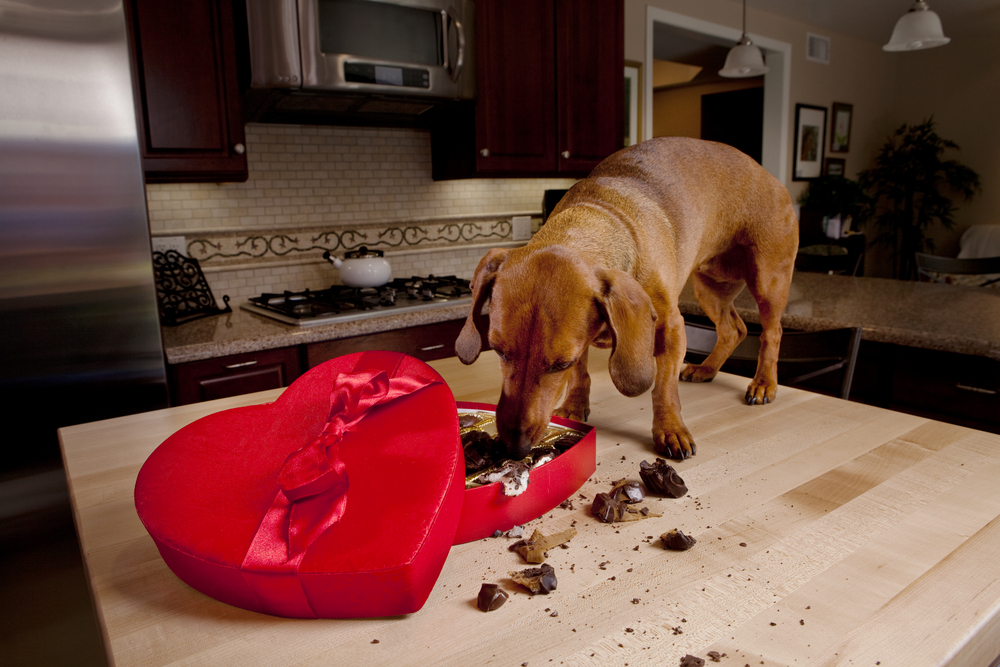
What to do when your dog eats chocolate
As we said at the top, even the best pet parent might find their pooch eyes deep in a heart-shaped box. It happens! So, what should you do if your dog eats chocolate? Your first step, according to the American Kennel Club is contacting your veterinarian. If your dog requires help after hours, contact the 24/7 Animal Poison Control Center at (855) 764-7661 immediately.
Your vet may instruct you to bring your dog into the clinic for treatment. Unfortunately, there is no proven antidote to theobromine poisoning. Instead, supportive care measures are used to treat symptoms of toxicity. To ensure the best possible outcome, your vet will most likely attempt to empty your dog’s stomach by using emetics to induce vomiting.
Thankfully, we have some good news. Dogs who receive prompt veterinary assistance generally have a good prognosis and don’t suffer any lasting side effects.
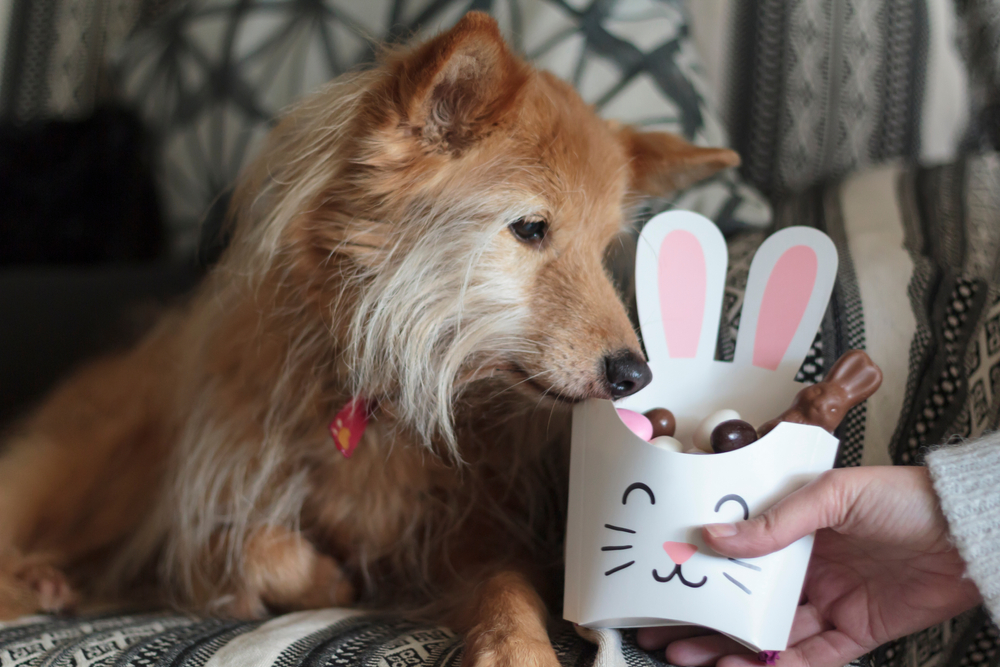
What not to do if your dog eats chocolate
Because it may take anywhere from 2 to 24 hours after ingestion for chocolate to impact your dog, you should never assume that your fur baby will recover without veterinary intervention simply because he isn’t displaying clinical symptoms right away.
Activated charcoal, a common home remedy for treating chocolate ingestion in dogs, should never be used without veterinary supervision. According to ASPCApro, mixing chocolate and charcoal can lead to a potentially fatal condition called hypernatremia.
Another home remedy is inducing vomiting with hydrogen peroxide. However, too much peroxide can actually worsen your dog’s symptoms. If there are no emergency clinics in your area, someone from the poison control helpline may instruct you to administer an emetic at home. You’ll want to follow their specific instructions and take your dog to the veterinarian as soon as possible.
Each year, chocolate makes the Top 10 list of reasons why pet parents contact poison control hotlines. To avoid potentially fatal consequences, you should always keep toxic foods, household cleaning items, medication (including vitamins and supplements), and pest control products under lock and key.
If you suspect your dog has eaten something toxic, contact your vet or poison control immediately. Just because he isn’t displaying symptoms doesn’t mean he isn’t ill. When it comes to your pet’s health, a prompt response is always best.
Editors' Recommendations
- The Best Dry Dog Food of 2023 for a Balanced Diet
- How to tell if your older dog’s health decline means the end is near
- Xylitol is dangerous for dogs: 10 surprising products that contain it as a hidden ingredient
- Here’s how to treat a dog with itchy paws, starting with finding the cause of paw discomfort
- What is the best food for older dogs? These 6 vet-approved kibbles and canned foods won’t steer you wrong




